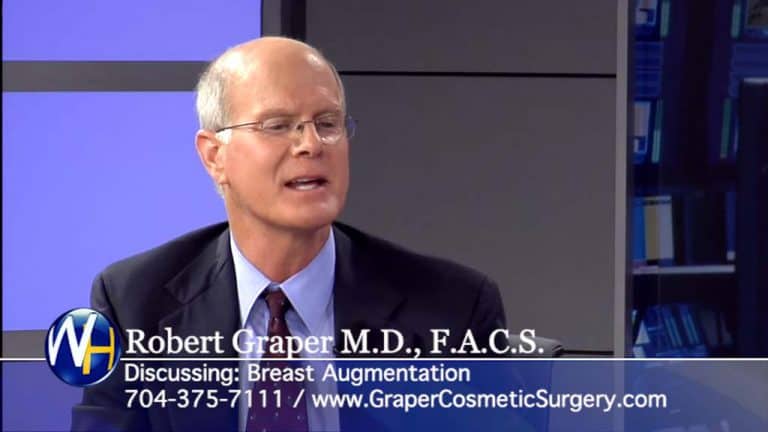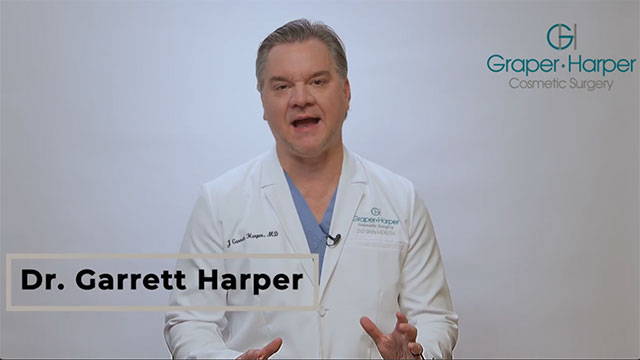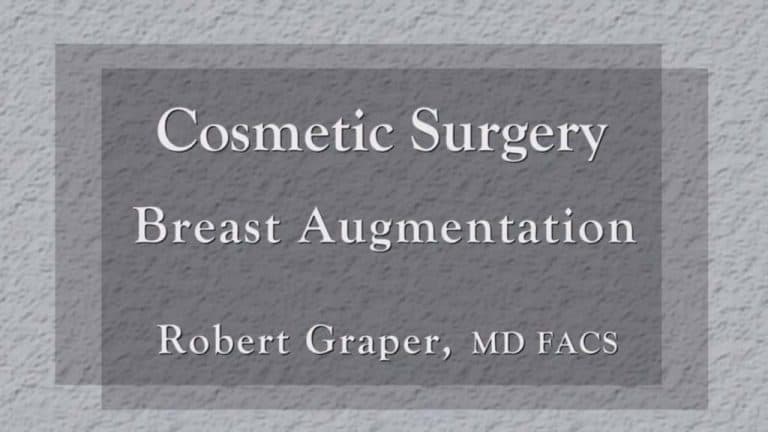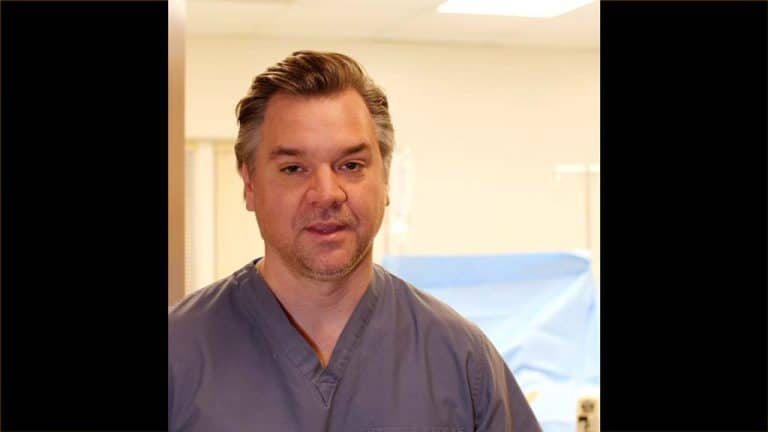Breast Augmentation: How Is It Performed?
Breast augmentation is performed with silicone implants placed either above or below the chest wall muscle through a less than two-inch incision in the fold under the breast. The incision heals great and is hidden nicely by the fold. This approach is the most accurate, least tender, and safe compared to all the other approaches. Silicone gel implants are the most common implants used in our practice and are one of the most heavily researched medical devices in the world. The implants come in different widths and profiles, which allows us the opportunity to help our patients reach their goals.
Studies have shown that detection of breast cancers is not reduced by breast augmentation in either the above or below the muscle position. The improvements in breast imaging over the past decade have made this even less of a concern.

The procedure is performed in our private plastic surgery suite which is conveniently located in Charlotte. We use a combination of general and local anesthesia so that when patients wake up, they have very little discomfort. As the local anesthesia wears off, most breast implant surgery patients with under the muscle implants will experience a sensation similar to that of a pulled muscle. This makes sense because the muscle has been partially cut and stretched to place the implant in the proper position. This sensation passes at about the same rate as a pulled muscle heals: in about seven to 10 days. For patients who are great candidates for above-the-muscle breast augmentation, they tend to have less soreness after surgery and experience stretching of the skin and overlying breast tissues only.
Important Factors to Consider
Here are some of the factors to consider when selecting breast implant size:
- Personality – Are you outgoing or shy? Conservative or radical? Do you like receiving compliments and praise for your physique, or would you rather “blend in” with everyone else?
- Fitness Level/Level of Activity – Are you a runner, a soccer player or a CrossFit enthusiast? Active on the yoga or Pilates scene? You don’t want the size of your implants to interfere with your fitness routine or favorite sporting activity.
- Body Type – Proportion is important to creating natural-looking results. Take a critical look at your body frame, height, weight, shoulder width, hip width, and current breast volume. Keep in mind that short, petite women generally need smaller implants than taller women with broad shoulders and wide hips.
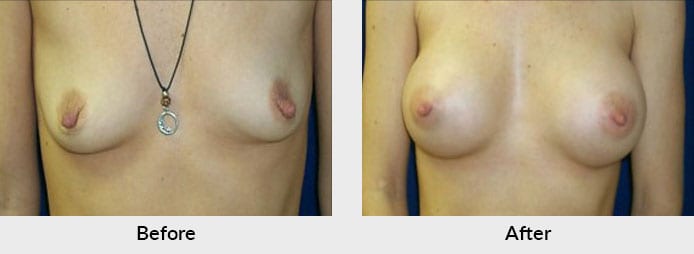
Post-op
Patients are discharged approximately one hour after surgery when they are alert and can take liquids well. They are sent home where most people sleep for several hours. We write prescriptions for pain medicine, muscle relaxants, antibiotics, and nausea medicine for the occasional patient who doesn’t tolerate the anesthesia well. We see our breast augmentation patients back in our Charlotte cosmetic surgery center within one week after surgery to monitor their progress and to begin breast exercises. The next appointment is approximately one week later when we may clip some suture ends and educate you on scar management. We then see the patients in six weeks when most of the swelling and skin stretching will have resolved. With most patients, we suggest patients wear a bra for the first three weeks as the bra helps support the breast pocket in the correct dimensions created during surgery. Occasionally, when the skin under the breast needs to be stretched, we will recommend wearing an ace wrap over the upper half of the breast to help stretch that skin and help keep the implant in the bottom of the pocket.
Potential Risks of Breast Implants
Like any surgical procedure, there are potential risks, just like there are risks in everyday life. For instance, when one drives a car, the risk of a flat tire, a dead battery, or an accident is small compared to the huge benefit of rapid transportation. Similarly, in breast augmentation, the risks are small compared to the benefits of the procedure. Each prospective breast augmentation patient, however, should be aware of the risks so that they may make an educated decision whether to proceed with breast implant surgery. The risk of bleeding or infection postoperatively is small; perhaps 1 to 2%. Correction of these problems may require additional surgery. We do not charge to treat these problems, but there is a facility charge for the cost of doing the procedure that patients are responsible for. Though the risk of bleeding after a breast augmentation is small (1-2%), we recommend limiting exercise or any activity that increases your heart rate or makes you out of breath to a bare minimum for two to three weeks. Most patients could do anything they want after surgery and be fine, but a small percentage will damage their tissues with trivial activity and cause bleeding. Bleeding requires us to go back to the operating room and remove the blood. This is an unnecessary expense and hassle that everyone wants to avoid. Since we do not know which patients will bleed, we restrict everyone’s activity to improve safety for all. You can walk as an exercise starting at two weeks, jog or ride a bicycle at four weeks and do whatever exercise you would like after six weeks.
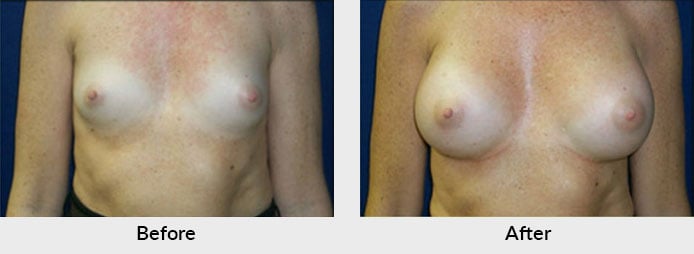
Some postoperative breast augmentation surgery patients experience temporary increased or decreased nipple sensation changes after surgery. Approximately 5% have a permanent change of decreased sensation that is caused by the nerve to the nipple crossing the same space where the implant must be placed. Most breasts are naturally slightly asymmetric in size, shape, or position. We will try to correct this asymmetry, if possible. Occasionally, we will introduce asymmetry. If this happens, together we will assess the risks and benefits of correcting the asymmetry. We will want to make the breast look as good as possible, as our patients are also our ambassadors in the community. Usually, our breast augmentation patients from Charlotte and the surrounding areas are unaware of any asymmetry and are very pleased with the results.
The implants are very durable and tolerate all everyday activities without any problem. The implant manufacturers report implant deflation or rupture rate at 3% at five years. If there is an implant deflation or rupture, the implant company will replace both implants for free and cover all expenses. Obviously, they are very confident in their product, as this is an excellent guarantee.
We mentioned capsular contraction before as a process where the scar around the implant may become smaller through the normal healing process. This contracture rate is minimized by choosing an appropriate size, using a no-touch technique to insert the implant into the pocket, using the fold incision, and various other strategies that we implore. If capsular contracture occurs, the breast will get firm and can progress to changes in the breast shape and eventually cause pain. We can easily correct the problem by simply releasing the scar all the way around the implant, but this requires an additional surgical procedure. It is much easier to prevent the problem by making the best preoperative and intraoperative decisions. This is the biggest problem with breast augmentation and occurs in approximately 8% of patients in 10 years. If a capsular contracture does occur, the implant company will cover all the expenses if the surgery is done at our location. Again, a great guarantee.
Though implants do not inhibit normal reading of mammograms, the American College of Radiology recommends that all breast augmentation patients get three views in a mammogram exam rather than the standard two views to help assess the entire breast. Visible rippling of the implant at the lower outer aspect of the breast can be a problem in very thin patients, even if the implant is under the muscle. This is because the skin is very thin and there is not much muscle or breast tissue in this location. This mostly relates to saline implants and not silicone implants. Patients must be very thin for this to be a significant problem.
Patients frequently ask, “How long will my implants last? Will I ever have to have breast revision surgery?” These are good questions and have commonsense answers.
There are two main reasons to re-operate after breast augmentation. Either the implant has a problem or the breast tissue itself has changed. Implant manufacturing has improved dramatically in the 25 years since it was first introduced. It is reasonable to expect an implant to last an average of 15 years, but in theory, could be fine forever.
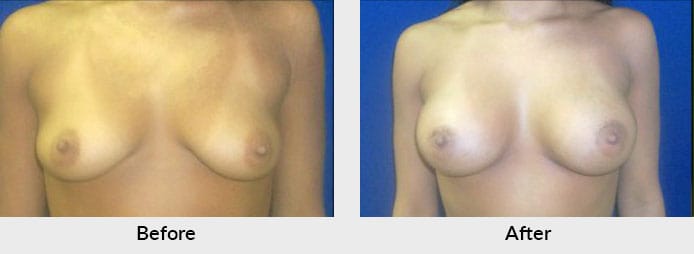
No one knows how the breast tissue will fare over time either. Between gravity, pregnancy, and capsular contracture, there are multiple reasons why the breasts shape may need help over the years. So, if one wants their breasts to continue to look as good as possible, additional surgery may be required to lift the sagging breast or perhaps enlarge the implant size in a shrunken breast. Even if one had no implants, surgery might be important to maintain an optimum breast shape, as stretching and atrophy also occur without implants.
Overall, breast augmentation surgery is a very safe operation with predictably good results. For our patients who do not feel good about the small size or shape of their breasts, this is an easy way to dramatically improve the way they feel about themselves. Give our North Carolina office a call today to schedule your consultation with one of our board-certified plastic surgeons. Our goal is to make you proud of your breasts.
Breast Augmentation Frequently Asked Questions
Women who are physically and emotionally healthy, have realistic expectations about the results of the surgery and understand the risks and benefits of the procedure are ideal candidates for breast augmentation.
Women may wish to increase the size of their breasts for a number of reasons, including:
- feelings that their breast size is too small or disproportionate to their body
- breasts have become uneven and symmetry is desired
- significant weight loss may have also shrunk breasts
- breast size and shape may have changed after pregnancy
Recovery from breast augmentation surgery may take two or three weeks. Most patients can return to light-duty work within one week postoperatively. Exercise can be resumed at three weeks postoperatively, and driving can be resumed as soon as the patient feels she can make evasive movements without hesitation and is off all pain medications.
Like any surgical procedure, there are potential risks, just like there are risks in everyday life. For instance, when one drives a car, the risk of a flat tire, a dead battery, or an accident is small compared to the huge benefit of rapid transportation. Similarly, in breast augmentation, the risks are small compared to the benefits of the procedure. Each patient, however, should be aware of the risks so that they may make their decision regarding proceeding with the operation. The risk of bleeding or infection postoperatively is small; perhaps 1 to 2%. Correction of these problems may require additional surgery. We do not charge to treat these problems but there is a facility charge for the cost of doing the procedure that patients are responsible for. So, there is both a small health risk as well as a financial risk in any surgical procedure. Some patients experience temporary increased or decreased nipple sensation changes after surgery, but it is rare to have a permanent change.
The cost of the procedure depends on many variables, so it is not possible to give a price without a personal consultation. Associated costs may include the price of the procedure, operating room costs, and anesthesia fees. Please contact us for a personal consultation.



